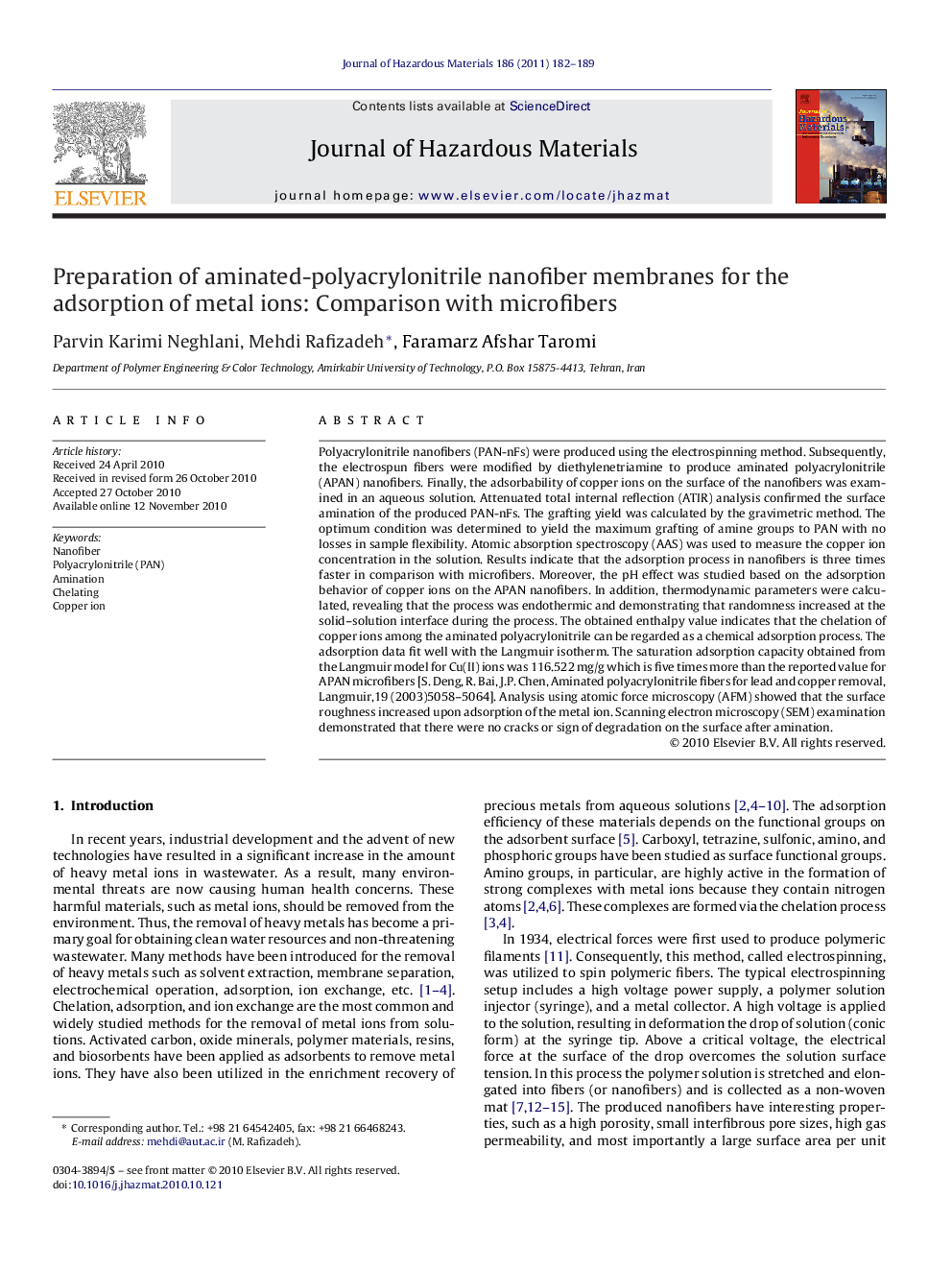| Article ID | Journal | Published Year | Pages | File Type |
|---|---|---|---|---|
| 10372712 | Journal of Hazardous Materials | 2011 | 8 Pages |
Abstract
Polyacrylonitrile nanofibers (PAN-nFs) were produced using the electrospinning method. Subsequently, the electrospun fibers were modified by diethylenetriamine to produce aminated polyacrylonitrile (APAN) nanofibers. Finally, the adsorbability of copper ions on the surface of the nanofibers was examined in an aqueous solution. Attenuated total internal reflection (ATIR) analysis confirmed the surface amination of the produced PAN-nFs. The grafting yield was calculated by the gravimetric method. The optimum condition was determined to yield the maximum grafting of amine groups to PAN with no losses in sample flexibility. Atomic absorption spectroscopy (AAS) was used to measure the copper ion concentration in the solution. Results indicate that the adsorption process in nanofibers is three times faster in comparison with microfibers. Moreover, the pH effect was studied based on the adsorption behavior of copper ions on the APAN nanofibers. In addition, thermodynamic parameters were calculated, revealing that the process was endothermic and demonstrating that randomness increased at the solid-solution interface during the process. The obtained enthalpy value indicates that the chelation of copper ions among the aminated polyacrylonitrile can be regarded as a chemical adsorption process. The adsorption data fit well with the Langmuir isotherm. The saturation adsorption capacity obtained from the Langmuir model for Cu(II) ions was 116.522Â mg/g which is five times more than the reported value for APAN microfibers [S. Deng, R. Bai, J.P. Chen, Aminated polyacrylonitrile fibers for lead and copper removal, Langmuir,19 (2003)5058-5064]. Analysis using atomic force microscopy (AFM) showed that the surface roughness increased upon adsorption of the metal ion. Scanning electron microscopy (SEM) examination demonstrated that there were no cracks or sign of degradation on the surface after amination.
Related Topics
Physical Sciences and Engineering
Chemical Engineering
Chemical Health and Safety
Authors
Parvin Karimi Neghlani, Mehdi Rafizadeh, Faramarz Afshar Taromi,
